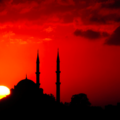Traces in Rituals: On Kiriti Sengupta

Memories are truncated beings. Born in moments, they are destined to become fragmented, forgotten, forbidden, and forsaken. Over time, they metamorphose simultaneously as refuge and also as exile. That they were once born from our lived experiences, and in the veins of that mysterious phenomenon we call life, is hardly understood. This process of mutilation renders a queer characteristic to all memories. They remain sporadically visible and partially absent.
This absence offers itself to us as traces, like a shadowed land with approaching twilight, or like a closed room with doors and windows shut, whose walls still hold traces of distressed words that were once written in a cryptic language. This language, obliterated over time, becomes transformed into a set of symbols. Existing in that twilight zone, as ciphers, they still continue to signify something else or something beyond, far away from our everyday reality.
In his latest volume, Rituals (Hawakal Publishers), the poet Kiriti Sengupta, a seeker of coherence in the chaos we call reality, embarks on a voyage to question, doubt, seek, and search for a greater truth that permeates existence.
The title, in addition to its religious connotations, gestures toward the mystic connections we have with our universe. Rituals give us a sense of belonging. A ritual, repeated and practiced as meditative performance, bridges the unnamed and unknown connections that exist in us and in nature. Rituals, as signs and symbols, hint at something beyond the ordinary, the mundane, the immediate reality, and assure us that we actually belong to someplace else.
This unknown has many names. Religious practices all across the world try to define this space, be it in Sufism or in the philosophy of the Bauls. And it is to this lineage we observe that Sengupta’s Rituals makes its unique mark.
It would be naïve of us to call the book religious or spiritual. In fact, Sengupta’s poetry is far removed from so-called divine seeking. His poems are more akin to the Upanishads—they observe, they analyze, they probe deeper into the very essence of phenomena, and then, they raise questions that remarkably look out for truths. I say truths and not The Truth because Sengupta is aware that there exists not a single truth, but multiple meanings that can be drawn from the essence of our reality.
No doubt, this perspective alone gives Rituals that distinct character which is not commonly found in contemporary poetry en vogue. Consider contemporary Indian English poets like Jeet Thayil or Nabina Das who are more vocal about their immediate reality and prefer to convey specific messages through their writing.
In the first poem of this book, “Comeback,” Sengupta’s perspective reveals itself: “I return after a year. The room is full of dust, the floor smeared with thick silt; the mirror on the wall is glued to ripped paint, and it deceives.” The poem reflects a kind of shudder, a longing for the distant past as well as the rupture the empty space proposes. In the last line, he poses this question: “The fruit-platter was in the storeroom—the leftovers ache…did someone split the chord of the earphone?”
A disconnect lies between the memory of what has been left behind and what is revisited. The sensuality of life once lived and pleasured is there, but with a lost sheen. Memories remain, but only as traces—bringing to mind Derrida’s definition of the term as “the absence of a presence.” The memories have been defaced by the passage of time, yet the deception lies not in the space of the room, or in the memories, but in the speaker’s reflection in the mirror. That deception is the always-already hidden trace.
As Sengupta observes, with an acute sense of simultaneous feeling and detachment, that time is transcendental. It changes us as it changes itself. He realizes the inevitability of mutation, which raises questions in the poet’s inquisitive mind. It also challenges him to discover the ways to restore it. Thus begins his voyage to connect the trace memories. Whether this odyssey will lead him to truth or not, he does not know, perhaps. But the questions need to be asked. There is a genuine urgency in his quest, as in the poem, “The Blues”:
The door is closed.
It is difficult to remember when
light entered the guardhouse.
In this heavy air
how does one breathe?
As the gate opens wide
I see a run for pleasure.
Horizon marks salvation.
Not in allegories,
but in eyes, lust flickers!
In extreme hunger,
how does one understand economy?
Wants mask the subconscious.
This playfulness, this toying with ideas and keen observations, renders a kind of irony to Sengupta’s poetry. They are like little cryptographs, sometimes concealing and sometimes revealing, always prompting readers to enter the maze and decipher it. But the poetic essence of these verses lies in the fact that they choose to remain as riddles, like journeys without a destination. Interestingly, these journeys often discover themselves to be a pilgrimage. In the poem, “Promising Griefs”:
Neither the plough
nor the bankrupt farmer know
whether the earth will receive
optimum water.
Consider the rice seed—
Not sure if it will rejoice
sprouting into a plant
that will invariably die
to give us food for life.
This is a pilgrimage, yes, but not in the typical religious sense. It recalls the angst of a modern man reproached and isolated by multiple thwarting questions, as in W B Yeats’ poem, “When you are old”:
How many loved your moments of glad grace,
And loved your beauty with love false or true,
But one man loved the pilgrim soul in you,
And loved the sorrows of your changing face
Sengupta’s Rituals has this mystic fervor, a pilgrim soul. In “On the Richter Scale,” he marks the ambivalence of our corporal life against the spiritual one, with a baffling question yet to be answered: “Fleeing the house and leaving the door ajar. Is it perversion or fallacy? To amble solitary in winter is amusing. It provides solace for some time.”
A few lines later, he ends the stanza with a question: “No trace of forgotten ventilators, the fumes swirl to ascend. The scale marks 5. Does vapor perspire?” We don’t know whether it does. As an essence of all things, it becomes omnipresent. It attains a character that lies either dormant or active in every soul on this earth.
There is another aspect to his poems, which is starkly political. Though not pedantic, they’re written with contemporary events in mind. In “Sridevi,” for example, Sengupta writes:
Your name hints at a goddess.
You endorse strength of will to the extent
that humans transform into snakes
and vice versa!
I wish you had taken away
all the venoms when you left.
With a wry sense of tragic humor, the poem interweaves a well-known myth and the accidental death of a popular Indian actor, Sridevi, to create a subtext that questions our belief system. For readers who wish to move beyond their immediate reality and face the multifaceted questions that riddle our chaotic lives, this slim volume is a must-read. Without consolation, Rituals takes us to another realm where poetry, as pure presence, resides.
About Sarbajit Sarkar
Sarbajit Sarkar is a poet, painter, translator, and critic. He is passionate about working in a variety of creative media and often engages his work in an ongoing dialogue between different art forms. His creative style is largely expressionist and postmodern. Sarbajit has authored seven books of poetry and three short story collections. He lives in Calcutta with wife Mridula, and two sons.





